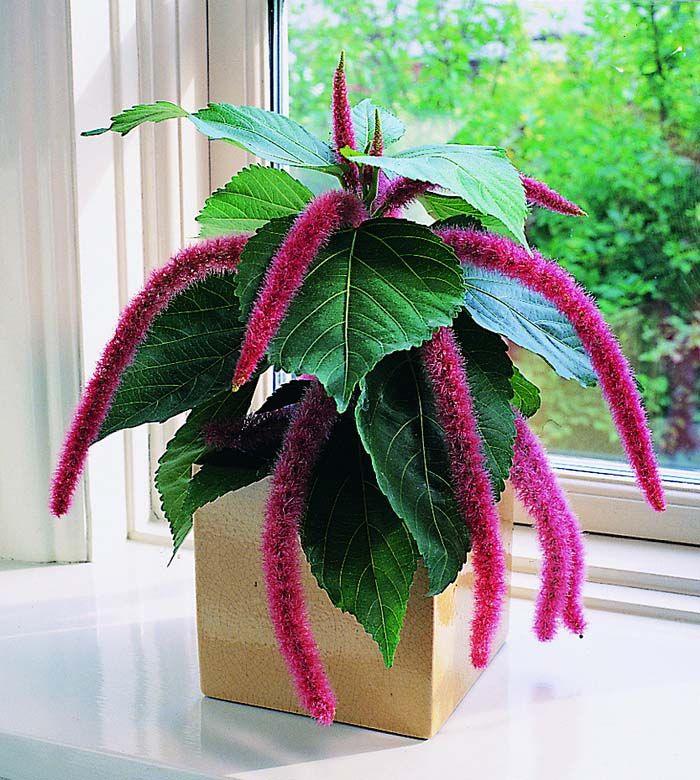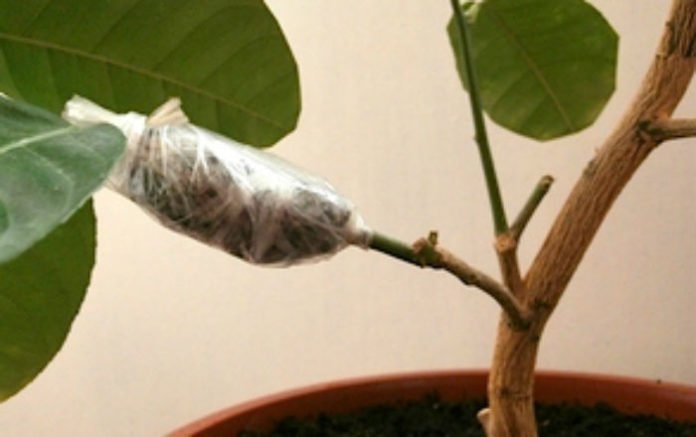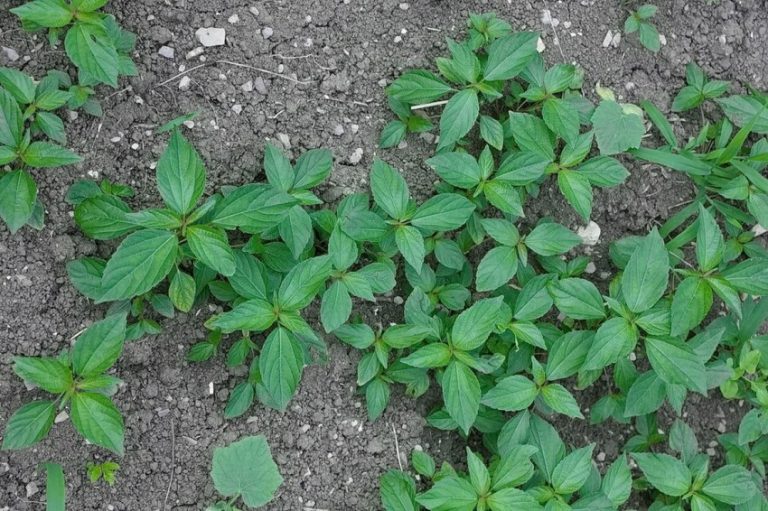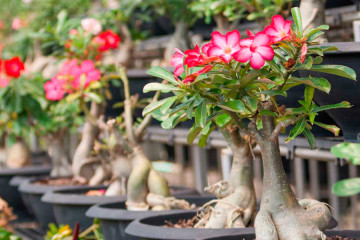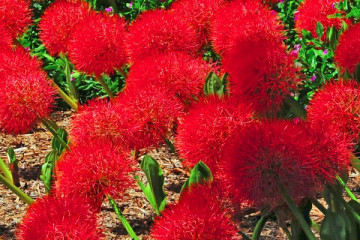Akalifa flower - home care
Content:
Akalifa (fox tail) is a perennial ornamental plant with dark red fluffy flowers. Even a novice grower can grow acalypha - caring for a crop is quite simple.
What does akalifa look like
Akalifa is a bush plant about 1 meter high. In nature, the shrub can reach more than 2 meters. There are two groups: with bright inflorescences, and with leaves of different colors. The first group is more popular due to the beautiful inflorescences-tails. The second is distinguished by a bronze-greenish foliage with copper-red spots and small (5-10 cm) flowers.
Care features
At home, Akalif does not require special care. The most important thing is regular watering.
Temperature regime
The optimum temperature in summer is +22 ℃, in winter it is -15 ℃. For the plant, sudden changes in temperature and drafts are detrimental.
Lighting
Akalifa prefers diffused light. In the shade, the leaves turn pale and lose their attractive appearance. Direct sunlight causes burns.
Moisturizing
Akalifa is a tropical flower, it needs timely abundant watering and frequent spraying. It is advisable to place the pot in a tray with wet pebbles. In summer they water it at least 2 times a week, in winter - as the top layer of the soil dries out.
It is necessary to moisten the soil with warm (about +30 ℃) filtered or settled water. For disinfection, it is useful to add a little citric acid to the liquid.
Top dressing and transplanting
In winter, the plant does not need feeding. With the arrival of spring, fertilizers are applied for flowering indoor plants every 10-14 days.
Transfer
Young flowers are transplanted annually, adults - once every 3 years. In order not to harm the roots, only the top layer of the soil can be renewed. Work is best done in the spring. The soil mixture should contain the same amount of turf, humus, river sand, peat chips.
Dormant period
In winter, you should transfer the flower to the south window, reduce watering, abandon top dressing.
When the akalifa blooms
With optimal care, the Fox Tail blooms from March to October. Over the years, the inflorescences become longer. In adult plants, they can reach 50 cm.
Pruning
Akalifa grows and stretches rapidly. To give the flower a more magnificent shape, you should cut off the tops of 3 buds 2 times a year. Once every 5 years, the bushes are cut to a height of 30 cm. After cutting the hemp, it is advisable to spray it with zircon.
How Akalifa reproduces
The flower reproduces in the following ways:
- Seeds. The right time for sowing is early spring. They create a greenhouse effect for seedlings. Under these conditions, seeds germinate faster. The pick is carried out when the sprouts reach 3 cm.
- Cuttings. Variegated varieties are cut year-round, bristly-haired akalifa - only in spring. It is better to treat the sections with means that stimulate root growth. The cuttings are rooted in the potting mix.After 1.5 months, the tops of the shoots are cut off.
- Air layering. Work should be done in the spring. The shoot site (10 cm) is freed from foliage. A shallow annular cut is made. Wrap the cleaned area with wet sphagnum moss or coconut fiber. Cover with foil on top, fix. After 3 months, the stalk with roots is transplanted into a separate container.
Diseases and pests
With inadequate care, the following problems can arise:
- The leaves turn yellow and fall off - a clear sign that the plant lacks moisture.
- The leaves turn pale - the soil contains an insufficient amount of nitrogen, additional feeding is necessary.
- Brown spots appear - a symptom of a fungal disease. The flower should be treated with a fungicidal preparation.
- Leaves wither and fall off - low temperature.
- Plant growth slowed down - lack of nutrients.
- Akalifa does not bloom - lack of lighting.
Aphids, spider mites, mealybugs can cause harm to the plant. Aphids (beige dots) settle on the top, buds and back of leaves. If the shoots are braided with thin threads, and light spots have formed on the inside of the leaves, the plant has been attacked by a spider mite. You can find mealybugs by dirty-white lumps that resemble cotton wool. To control pests, they resort to insecticidal agents for indoor plants.
Akalifa varieties
Florists make a choice in favor of the following varieties:
- Akalif Wilkes (wilkesiana). The evergreen shrub can grow to over 1.5 meters in height. The plant is famous for its rich color range of leaves. In some subspecies, they are decorated with multi-colored stripes and spots. Others have plain foliage with contrasting edging. The shrub needs abundant watering and a lot of light. Houseplants should be renewed annually by cuttings.
- Akalifa bristly-haired (hispida). If you remove the tops of the shoots, the shrub can be grown in hanging pots. Velvety purple inflorescences resemble lashes of fur. Akalifa Hispida, with proper care, blooms throughout the year.
- Akalifa southern (australis) is an annual plant with a straight stem, covered with hard hairs. Grows on sandy and clay soils. Prefers light shading or open spaces.
- Akalifa Indian (indica). The shrub plant has a thin stem and small toothed leaves. Spikelets are inconspicuous, consist of small light pink flowers.
The main requirements for growing akalifa are diffused light, timely moisture, no drafts. So that the poisonous juice does not cause burns or poisoning when working with a flower, gloves and special tools must be used. The glasses will protect against splashes on the mucous membranes of the eyes.

